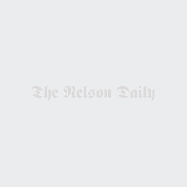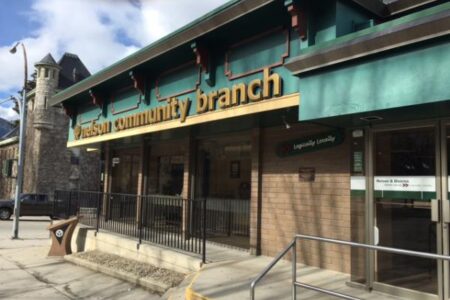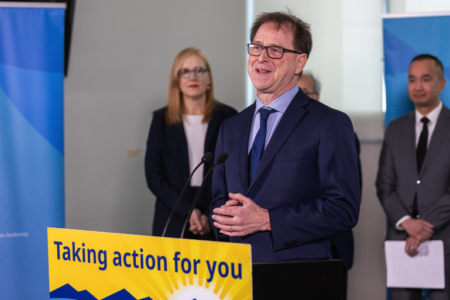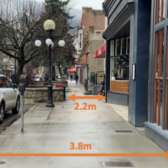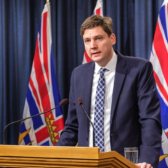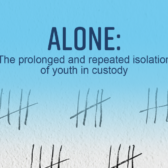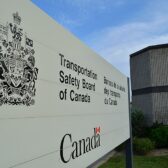Budget 2011 comes down with new spending
Finance Minister Colin Hansen delivered a status-quo budget for British Columbians on Tuesday, with a nod and an increase in spending for core health care, education and social services.
Budget 2011 focused new spending on health care and social services and provides some fiscal flexibility for the priorities of the new premier and executive council, Hansen said Tuesday in a press release from Victoria.
The budget provides the Ministry of Health Services with a $605-million increase in 2013-14 for front-line service delivery, $65 million over three years to the Ministry of Social Development for income assistance for individuals and families in need, and an additional $150 million to the Contingency Vote in 2011-12 to address unforeseen issues and provide flexibility for the next executive council.
The deficit is forecast at $1.265 billion for the 2010-11 fiscal year – over 25 per cent lower than the $1.715 billion forecast in Budget 2010.
Budget 2011 forecasts deficits of $925 million in 2011-12 and $440 million in 2012-13, and a surplus of $175 million in 2013-14.
The fiscal plan will return the Province to a downward trend in the taxpayer-supported, debt-to-GDP ratio to support maintaining its AAA credit rating.
The new funding provided in Budget 2011 builds on the funding increases in past years to raise the Ministry of Health Services budget by almost $2 billion compared to 2010.
By 2013-14, health care expenditures will reach $18.5 billion and make up more than 42 per cent of total government spending.
Funding B.C.’s education system remains a key priority. Per-pupil funding will rise to $8,357 in 2011-12 – the highest level ever. Total operating funding for school districts remains at $4.7 billion. The government spends over $24 million per school day on education programs and services to support B.C. students across the province.
The Province will continue to deliver new schools, health facilities, road improvements and hydro-electric facilities through its three-year, $19 billion capital plan, including federal contributions. Capital spending will return to historical levels as investments accelerated in response to the economic downturn are completed.
“The fiscal plan set out in Budget 2011 reflects our responsibility to hold the line on government spending as B.C.’s economic recovery continues,” Hansen said. “Our approach helped B.C. successfully manage the economic downturn better than many other jurisdictions around the world.”
British Columbia’s economy performed better than expected in 2010, with an anticipated growth rate of 3.1 per cent. In addition, B.C.’s independent Economic Forecast Council upgraded its forecast to 2.7 per cent growth in 2011. The Ministry of Finance’s outlook – generally more prudent than the council’s – projects 2 per cent growth in 2011 and 2.6 per cent in 2012.
-30-
A backgrounder follows.
For the Finance Minister’s speech and more details on Budget 2011, visit www.bcbudget.ca.
Visit the Province’s website at www.gov.bc.ca for online information and services.
Media Contact:
Finance Communications
250 356-2821
For more information on government services or to subscribe to the Province’s news feeds using RSS, visit the Province’s website at www.gov.bc.ca.
BACKGROUNDER
For Immediate Release
2011FIN0012-000137
Feb. 15, 2011
Ministry of Finance
FISCAL PLAN 2011-12 – 2013-14
Economic Outlook
In 2010, key economic indicators such as employment, housing starts, retail sales and exports show that B.C.’s economy is recovering from the weakness experienced in late 2008 and early 2009.
The Ministry of Finance forecasts the economy to grow by two per cent in 2011, 2.6 per cent in 2012, and 2.8 per cent in the medium term, closer to historical growth levels.
Risks to the economic outlook include continued weakness in the U.S. economy, the European sovereign debt crisis, slower global demand, increased moderation in the Canadian housing market, and a sudden rise in the value of the Canadian dollar.
Revenue Outlook
Total government revenue is forecast at $41.3 billion in 2011-12, $42.4 billion in 2012-13, and $44.1 billion in 2013-14. Revenue is expected to average 3.4 per cent annual growth over the next three years.
Expense Outlook
Total expense over the three-year plan is forecast at $41.9 billion in 2011-12, $42.5 billion in 2012-13 and $43.6 billion in 2013-14 — an average annual increase of two per cent over the next three years.
Priority Funding
Although a status-quo budget overall, Budget 2011 allocates new funding for health care and social services priorities. It also gives some flexibility for future decisions by the new premier and executive council.
The budget provides:
· $605 million to the Ministry of Health Services in 2013-14 to sustain front-line service delivery.
· $65 million over three years to the Ministry of Social Development to provide for income assistance to individuals and families in need.
· An additional $150 million to the Contingency Vote, in 2011-12 only, to address unforeseen issues and provide flexibility for the next executive council.
Health Care
Budget 2011 confirms government’s ongoing commitment to protect health care. By 2013-14 the Ministry of Health Services’ budget will increase by almost $2 billion from 2010-11 levels.
Total health spending by function will reach $18.5 billion or 42.5 per cent of all government expenses by 2013-14.
Education
Per-pupil funding for students in the K-12 levels is estimated to increase to $8,357 for 2011-12, the highest ever. In total, operating funding for school districts is $4.7 billion in 2011-12 on a school-year basis.
Continuing government’s strong commitment to funding higher education, funding for post-secondary institutions is $1.9 billion in 2011-12. Post-secondary funding has increased by 36 per cent since 2001-02.
Capital Spending
Capital spending on schools, hospitals, roads, hydro-electric projects and other infrastructure in B.C. is expected to total $19 billion over the next three years. Capital spending is anticipated to return to historical levels as the accelerated infrastructure program winds down in 2011-12.
Since October 2008, the government committed $5.5 billion to about 900 accelerated capital infrastructure investments around the province to stimulate the economy and keep British Columbians working in the construction sector. This investment, partially funded by $1.5 billion in federal contributions, is expected to maintain approximately 35,000 direct construction jobs over the life of these projects.
Debt
The total provincial debt is forecast to be $53.4 billion in 2011-12, $57.6 billion in 2012-13 and $60.4 billion in 2013-14.
Between 2002-03 and 2008-09, the taxpayer supported debt-to-GDP ratio — a key measure of debt affordability — was reduced by 37 per cent. This significant reduction enabled government to absorb the impact of the economic slowdown. The debt-to-GDP ratio will peak at 17.8 per cent in 2012-13 and will return to a downward trend in 2013-14.
Taxpayer-supported interest costs continue to remain low, averaging 4.7 cents per dollar of revenue over the three-year fiscal plan.
Budget Outlook
Budget 2011 projects deficits of $925 million in 2011-12, $440 million in 2012-13, and a surplus of $175 million in 2013-14 as the government returns to balanced budgets.
The fiscal plan includes contingencies of $600 million in 2011-12 and $450 million in each of 2012-13 and 2013-14. A forecast allowance of $350 million has been included in each year of the fiscal plan to manage revenue volatility.
-30-
For the Finance Minister’s speech and more details on Budget 2011, visit www.bcbudget.ca.
Visit the Province’s website at www.gov.bc.ca for online information and services.


